“Individual players cannot choose their class. In real life, this is usually determined by the kind of family into which one is born. In “Class Struggle” too it is chance that decides. Throw the genetic (or luck-of-birth) die, the one with the symbols on it, to see who plays what class.”
– Class Struggle, The Board Game, 1978
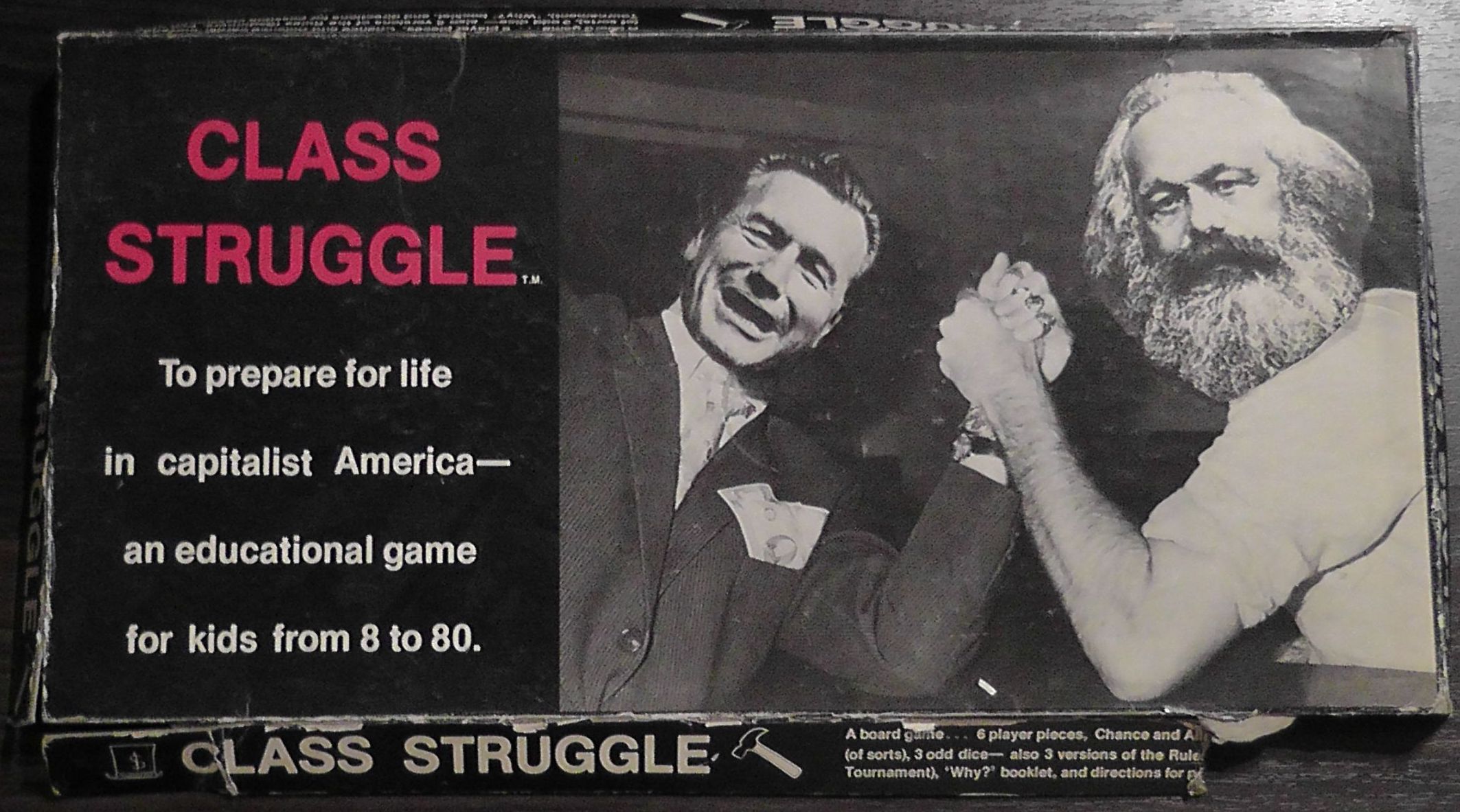
Time to play Class Struggle, the 1978 board game for all the family “from 8 to 80”. This game will prepare you for “capitalist life in America”. Designed by Professor Bertell Ollman (born 1930), a professor of politics at New York University, the game was published as an educational tool.
The game’s cover shows Karl Marx (5 May 1818 – 14 March 1883), a German philosopher and socialist revolutionary, arm wrestling Nelson Rockefeller (July 8, 1908 – January 26, 1979), an American businessman and politician who served as the 41st vice president of the United States from 1974 to 1977.
In an article published in Texas newspaper The Eagle on 24 May 1978, we learn that Class Struggle was being sold in outlets from bookstores to Bloomingdale’s for $9.99. The game was translated into Italian, German, French and Spanish. Over 230,00 units were sold. As the paper quips: “Since the game came out, the professor has been learning about capitalism first hand.”
Is it any good, though? “The game is fun,” Olleman told the Chicago Sun-Times in May ’78. “It is also a chance to show how capitalism works.”
According to Board Game Geek, “the Workers move around a board while trying to survive against the Capitalist who control everything. As the Workers unite they take power from the Capitalist players but if they do not succeed in uniting the Capitalist will win.”

The game’s manifesto tells us more:
This game is a vehicle for instructing students (there is a classroom section in the rules) on why Marxism is superior. The Workers move around a board while trying to survive against the Capitalist who control everything. As the Workers unite they take power from the Capitalist players but if they do not succeed in uniting the Capitalist will win.
Class Struggle reflects the real struggle between the classes in our society.
THE OBJECT OF THE GAME IS TO WIN THE REVOLUTION . . .
ULTIMATELY.Until then, classes – represented by different players – advance around the board, making and breaking alliances, and picking up strengths and weaknesses that determine the outcome of the elections and general strikes which occur along the way.
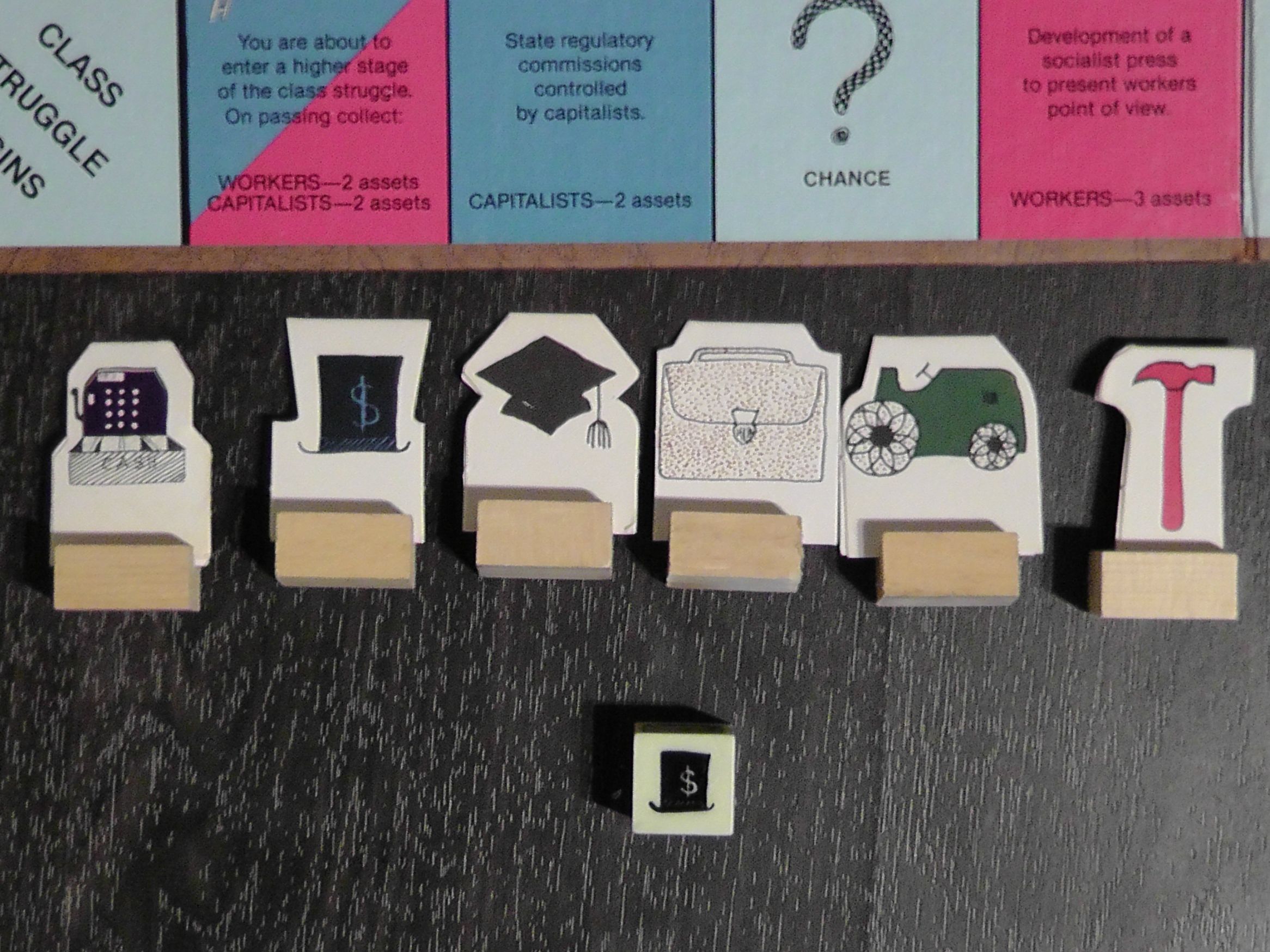
The game includes a “basic” and “full” rule book, plus a booklet designed to expand on the lessons imparted within. They are very complicated, so we’ve picked out the highlights:
PLAYERS
“Class Struggle” can be played by two to six players.
THE REAL PLAYERS IN “CLASS STRUGGLE,” HOWEVER, ARE CLASSES, not individuals. Workers (those who produce shoes, cars, houses and so on) and Capitalists (those who own the machines and factories with which these things are produced) are the Major Classes. Farmers, Small Businessmen, Professionals (doctors, lawyers, professors, etc.) and Students are the Minor or Allied Classes. In the game, the hammer symbolizes the Workers, the top hat—the Capitalists, the tractor—the Farmers, the cash register—the Small Businessmen, the brief case—the Professionals, and the mortarboard—the Students.ONLY THE WORKERS AND THE CAPITALISTS CAN WIN OR LOSE IN “CLASS STRUGGLE”. The Minor Classes can only participate in winning or losing through their alliances with one of the Major Classes (see Rule 12).
DICE
Individual players cannot choose their class. In real life, this is usually determined by the kind of family into which one is born. In “Class Struggle” too it is chance that decides. THROW THE GENETIC (OR LUCK-OF-BIRTH) DIE, THE ONE WITH THE SYMBOLS ON IT, TO SEE WHO PLAYS WHAT CLASS…

ASSETS AND DEBITS
Capitalists get points (plus points are called “ASSETS” and minus points are called “DEBITS”) only if they land on Capitalist (blue) Squares, which list the strengths and weaknesses of the Capitalist Class in the real Class Struggle. Workers pick up points only if they land on Worker (red) Squares, which list the actual strengths and weaknesses of the Working Class in this same struggle. As part of their unfair advantages, the Capitalists decide which of the other classes should do the hard but necessary work of handing out assets and debits, that is of taking care of the “BANK”.The MINOR CLASSES PICK UP ASSETS AND DEBITS whenever they land on either Capitalist or Worker Squares until they enter an alliance with one of the Major Classes, after which they get points only from squares that carry the name of their ally. (See Rule 12).
CHANCE
When landing on a Chance Square, Capitalists pick up a CHANCE CARD from the pack marked “Capitalist”, and Workers from the pack marked “Worker”…

ALLIANCES
Squares which read “Chance for an Alliance with the Farmers” (or Small Businessmen, or Professionals, or Students) permit the Major Class which lands there to enter into an alliance with the Minor Class named there. Each Minor Class has a CLASS ALLIANCE CARD which it gives to its new ally to seal the alliance… Though EACH ALLIED CLASS RETAINS ITS OWN ASSETS AND DEBITS, their points are counted together in any future “Confrontation”.MINOR AS WELL AS MAJOR CLASSES HAVE A CHANCE TO ENTER INTO ALLIANCES if they land on an Alliance Square. If a Minor Class (say Farmers), which is already allied to a Major Class (say Capitalists), lands on a square that makes possible an alliance with the Students, the latter automatically becomes an ally of the Capitalists as well. In this way, the Minor Class allies of each major class can pick up alliances for their Major Class ally…
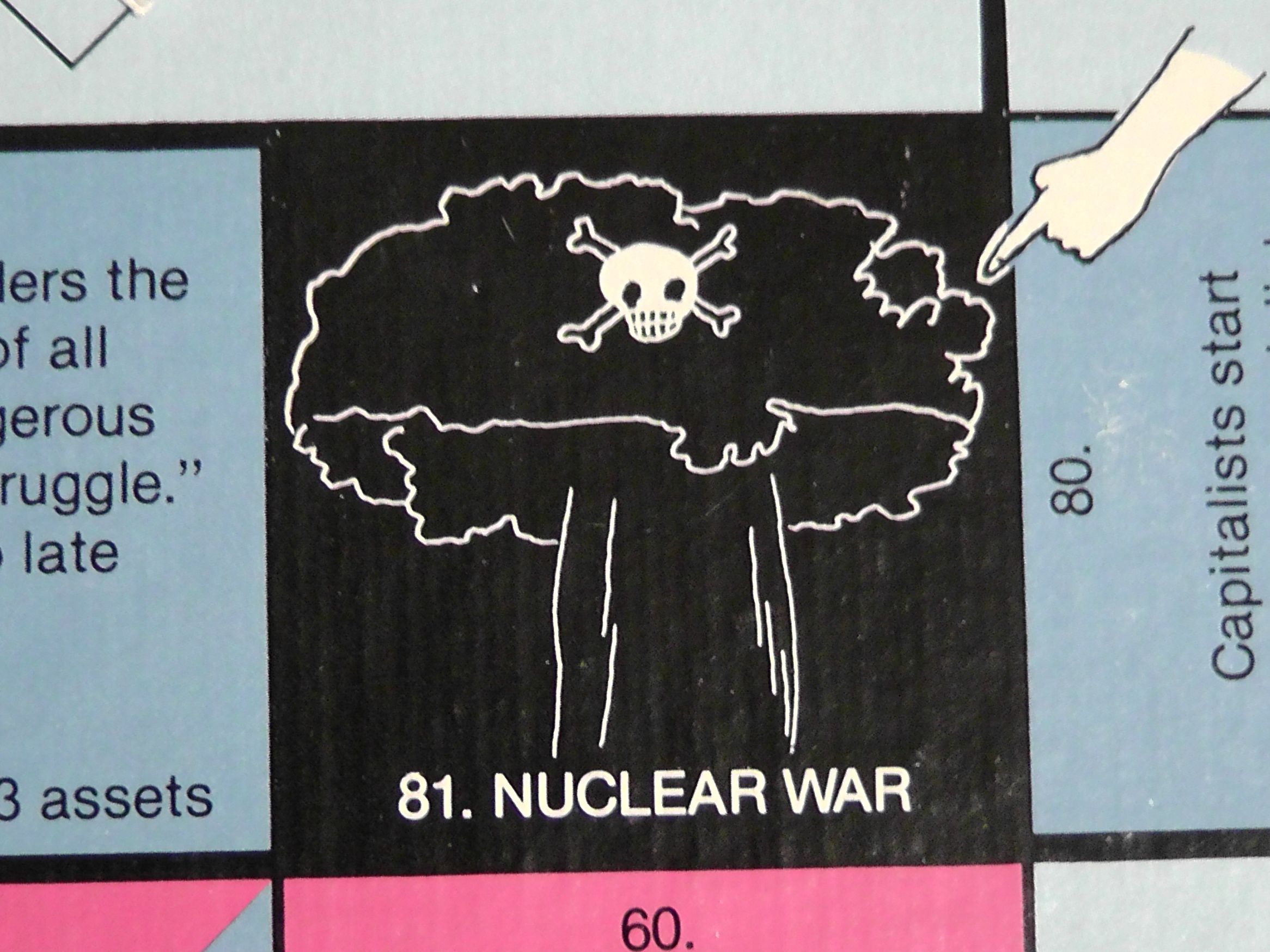
If the Capitalists land on square 81 this triggers off NUCLEAR WAR and brings an automatic end to the game. If the Workers or any of its allies land there first, the power of the Capitalists to start such a war has been voided for the remainder of the game. (See Rule 34 of the FULL RULES and number 81 of the “WHY?” section of the accompanying booklet for the explanation).
Having played “Class Struggle” a few times by these simplified rules, you are ready to play by the FULL RULES. Go ahead—try it!
As for those chance cards, two examples are:
WORKER CARD:
“You have just been laid off from work. If you blame yourself, or foreign competition, or the Blacks, or Jews, move two spaces back. If you blame the capitalists, move two spaces ahead.”
CAPITALIST CARD:
“You are caught feeling sorry for the workers. Victory in class struggle comes to people who think about their own class. Miss two turns at the dice.”
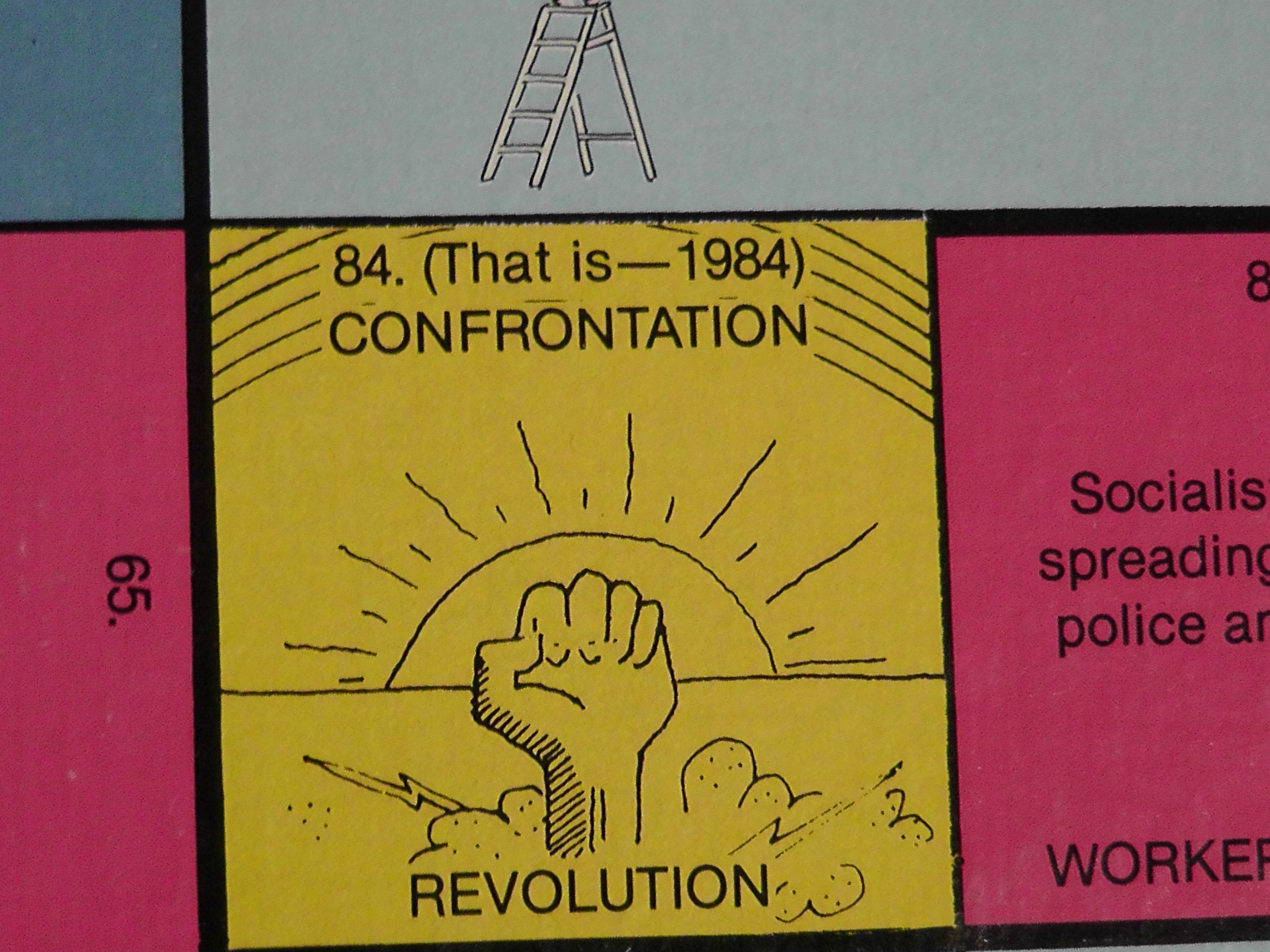
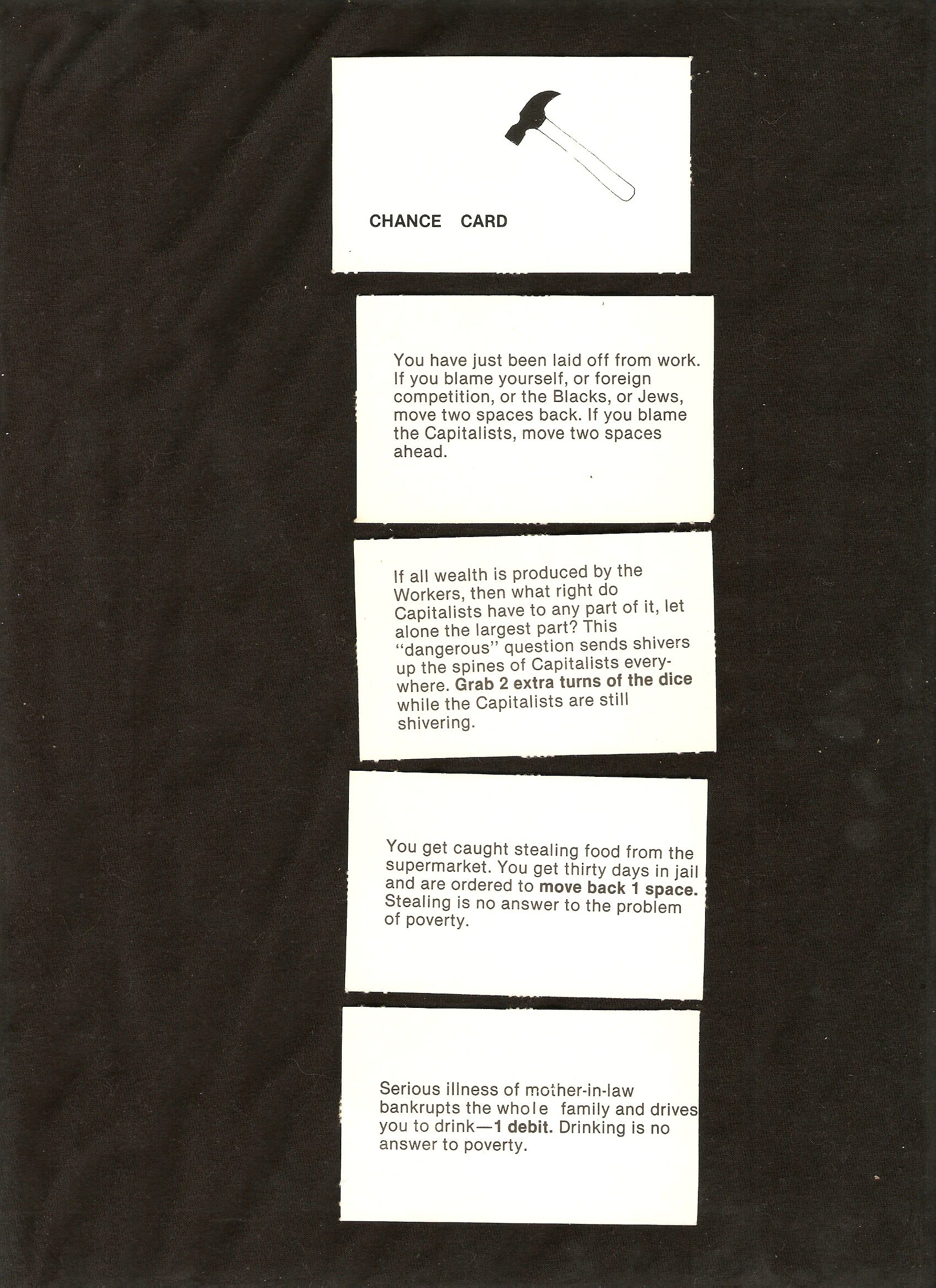

Artwork: Arrival of the Jarrow Marchers in London, 1936, by Thomas Cantrell Dugdale.
Via: Imgur.
Would you like to support Flashbak?
Please consider making a donation to our site. We don't want to rely on ads to bring you the best of visual culture. You can also support us by signing up to our Mailing List. And you can also follow us on Facebook, Instagram and Twitter. For great art and culture delivered to your door, visit our shop.


